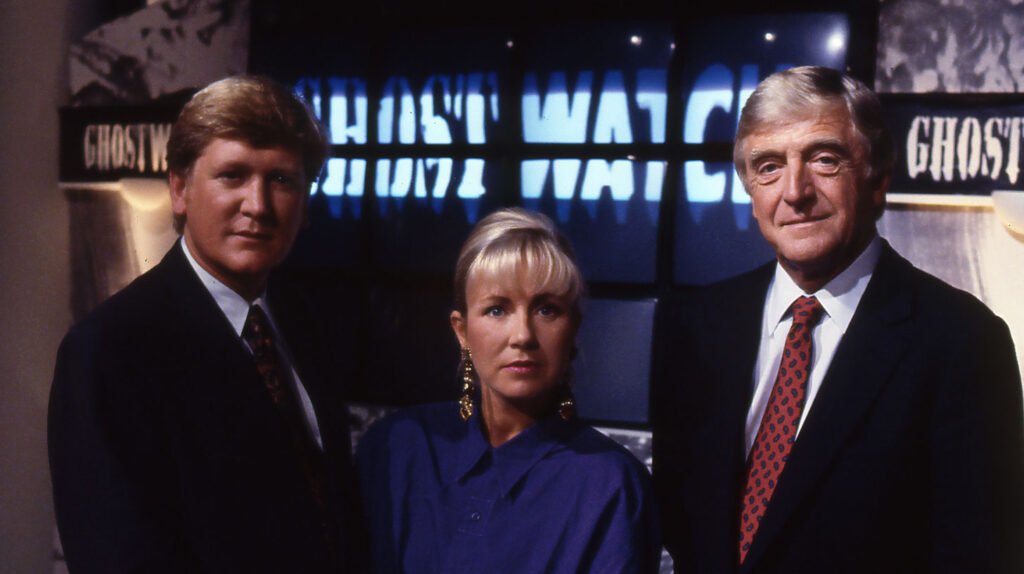Halloween night, 1992. A date that sent shockwaves through the UK. Families gathered around their televisions, expecting a thrilling but harmless evening courtesy of the BBC. What they got was a night that shattered the boundaries of reality and fiction, leaving viewers traumatized and the nation in an uproar.
The Ingenious Premise: A “Live” Paranormal Investigation
Conceived by horror writer Stephen Volk, Ghostwatch was presented as a live investigation into paranormal activities at a family home in Northolt, north-west London. The show was groundbreaking, blurring the lines between reality and fiction. Trusted BBC faces like Michael Parkinson, Sarah Greene, and Craig Charles presented the show, adding to its authenticity. The show even encouraged viewers to call in with their own ghost stories, further blurring the lines between reality and fiction.

The Backstage Reality: A Scripted Nightmare
Contrary to the “live” broadcast claim, the show was pre-recorded and carefully scripted. The producers went to great lengths to make it appear live, including using real BBC presenters and a real phone number for viewers to call. The set was meticulously designed to resemble a typical British family home, complete with children’s drawings and family photos.
The Ghost Called Pipes
As the show progressed, the family living in the haunted home revealed they’d been haunted by a ghost named Pipes. This ghost was later identified as the disturbed spirit of a child molester named Raymond Tunstall, who had previously lived in the house. The revelation sent chills down the spines of millions.
The show was so realistic that it led to national hysteria. The BBC received more than 30,000 complaints, including a woman who claimed it induced her labor. The show was even blamed for several cases of PTSD in children.
Ghostwatch: The Tragic Case of Martin Denham
The show had severe real-world consequences. Martin Denham, an 18-year-old, took his life just days after the broadcast. His parents blamed the show for his death, leading to an investigation by the Broadcasting Standards Commission.

Stephen Volk, the mind behind Ghostwatch, stated that the aim was not to fool the audience but to scare them. However, the show left many feeling deceived by the BBC, a trusted institution.
The Ban: A Decade Without Ghostwatch
Due to the overwhelming public outcry and the tragic events that followed, the BBC imposed a 10-year ban on the show. Lesley Manning, the director of Ghostwatch, stated that she “didn’t set out to cause mass hysteria” but also didn’t aim to make it look like a conventional BBC movie.
The show didn’t just impact the viewers; it had a lasting effect on the psychology of the nation. The British Medical Journal even published a report detailing cases of children suffering from PTSD due to the show.

The Cultural Impact: A Lesson in Media Literacy
This show serves as a cultural touchstone for discussions on media literacy. It’s a stark reminder of the power media holds and the responsibility that comes with it. The show has been studied in academic circles, dissected for its impact on public perception and media ethics.
Ghostwatch remains a controversial yet iconic piece of television history. It serves as a cautionary tale about the power of media to blur the lines between reality and fiction, leaving an indelible impact on its audience.
Are you into unexplained mysteries?? Next up: Read the 6 Internet Mysteries nobody solved till today.

